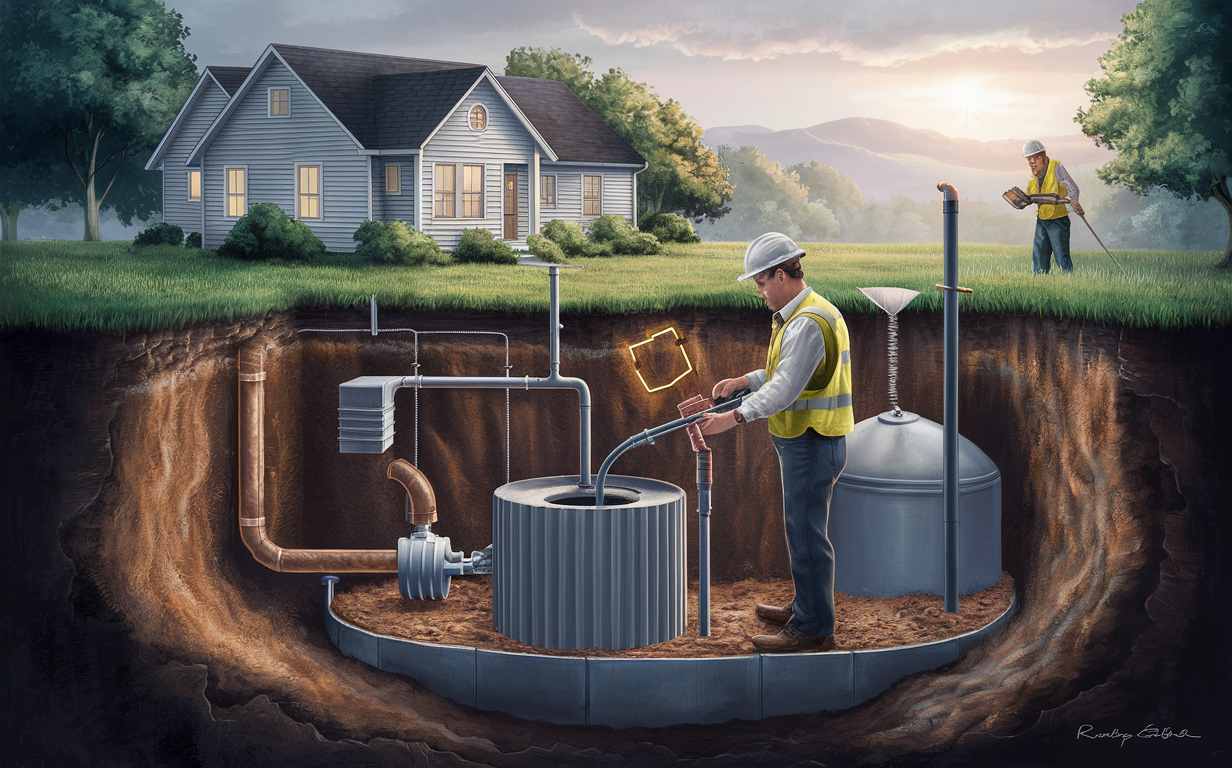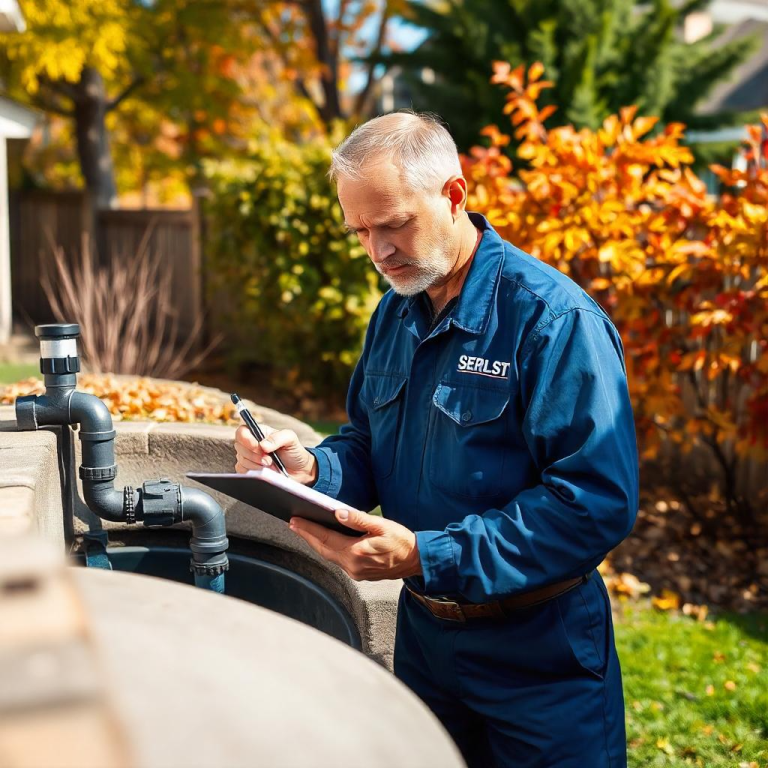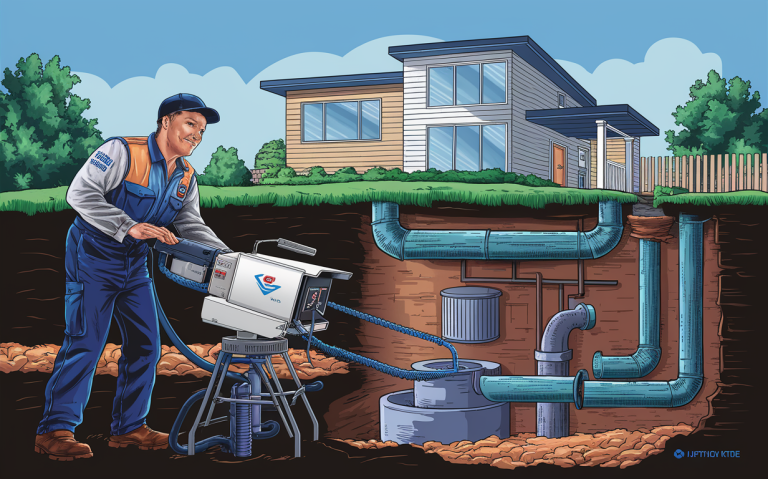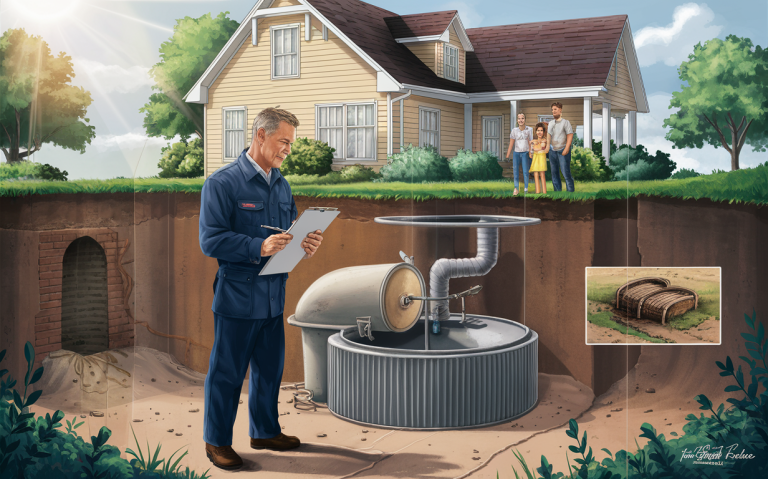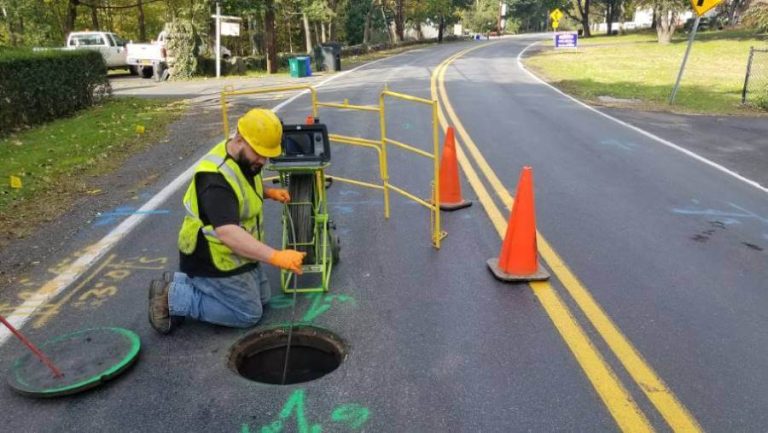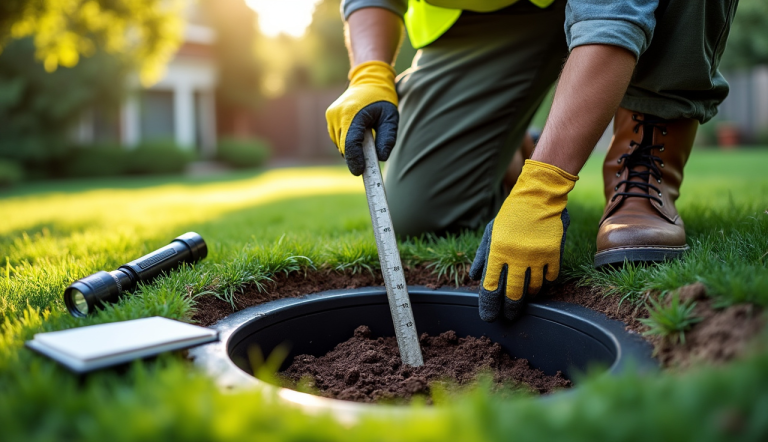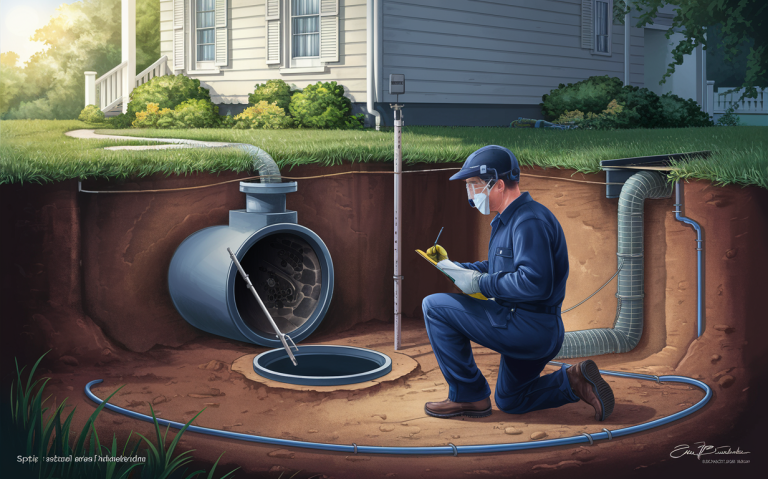Remarkable Guide: Troubleshooting Septic System Problems with Inspections
When Troubleshooting Septic System Problems with Inspections start to act up, it can quickly turn into a headache. But don’t worry—our guide will show you how inspections can help troubleshoot septic system problems efficiently.
Table of Contents
Key Takeaways
- Septic inspections are crucial for identifying problems early.
- Regular inspections can prevent costly repairs.
- Inspections involve a range of techniques, from visual checks to video camera inspections.
- Knowing what to look for can save you time and money.
Why Troubleshooting Septic System Problems with Inspections
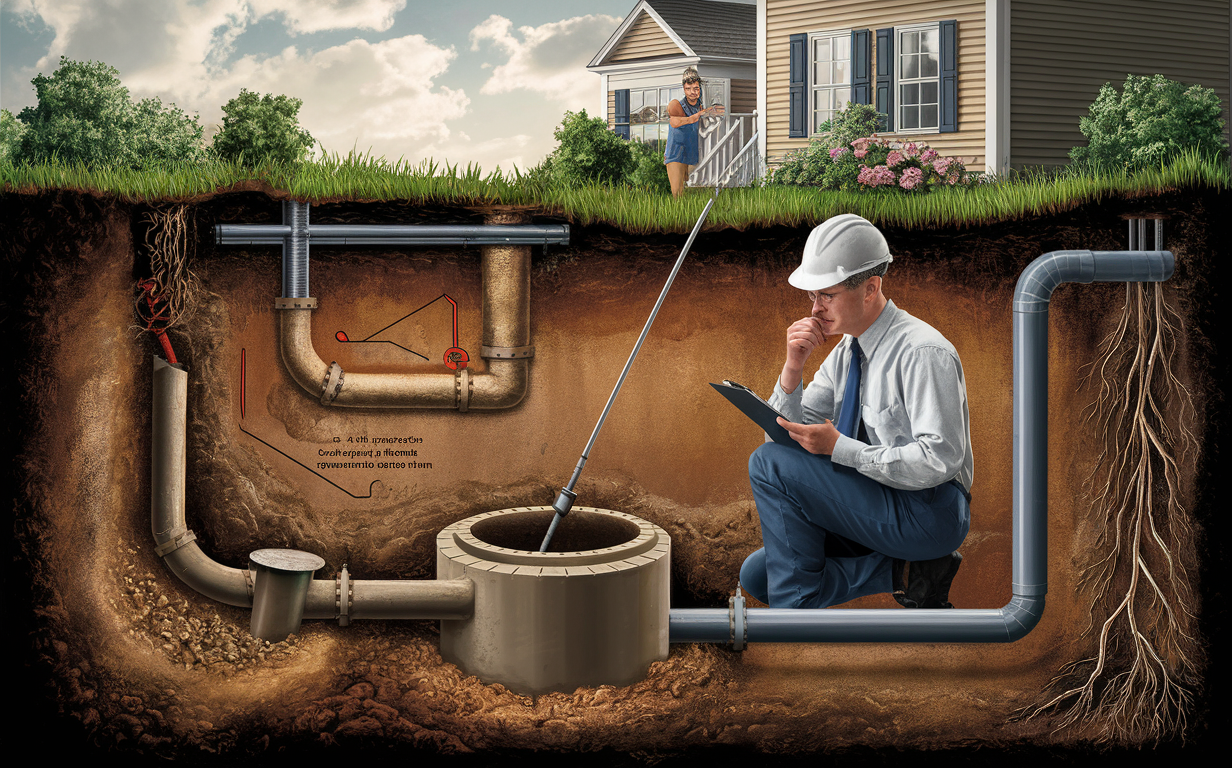
Regular inspections are essential for maintaining the health of your septic system. Without them, minor issues can turn into major, costly repairs. Inspections help in identifying issues like sludge buildup, clogged pipes, or even tree root invasions that can disrupt your system.
What Happens During Troubleshooting Septic System Problems with Inspections?
Inspections typically involve several steps:
- Visual Inspection: Checking the area around the septic tank for signs of leakage or backup.
- Sludge and Scum Measurement: Measuring the levels of sludge and scum in the tank.
- System Flow Tests: Ensuring the wastewater is flowing correctly from the house to the tank.
- Video Camera Inspections: Using cameras to identify blockages, cracks, or other issues within the pipes.
Common Troubleshooting Septic System Problems with Inspections Identified
Sludge Buildup
One common issue is sludge buildup. Over time, waste accumulates at the bottom of the septic tank, reducing its efficiency. Regular pumping is essential to keep this under control.
Leach Field Clogs
The leach field, or drain field, is where the wastewater from the septic tank gets filtered. Clogs in this area can cause backups and even contaminate the surrounding soil.
Tree Root Invasion
Roots from nearby trees can infiltrate the septic system, causing blockages and damage to pipes.
Structural Damage
Cracks or breaks in the tank or pipes can lead to leaks, which can contaminate groundwater and cause the system to fail.
Tools And Techniques For Effective Inspections
Video Camera Inspections
Video camera inspections are one of the most effective ways to detect issues within the septic system. By inserting a camera into the pipes, technicians can get a real-time view of any blockages, cracks, or other problems.
Sludge Measuring Devices
These devices gauge the level of sludge in the tank, helping to determine if it needs pumping.
Dye Tests
Dye tests can help locate leaks in the system. A non-toxic dye is flushed through the system, and any leaks will show up where the dye appears.
DIY Vs. Professional: Troubleshooting Septic System Problems with Inspections
While some basic inspections can be done by homeowners, it’s usually best to hire professionals for a thorough check. Professionals have the tools and expertise to identify and fix issues that you might miss.
Pros Of DIY Inspections
- Cost-saving
- Immediate identification of visible issues
Cons Of DIY Inspections
- Lack of specialized tools
- Potential for missed problems
Pros Of Professional Inspections
- Comprehensive evaluation
- Use of advanced tools like video cameras
- Accurate diagnosis
How Often Should Inspections Be Done?
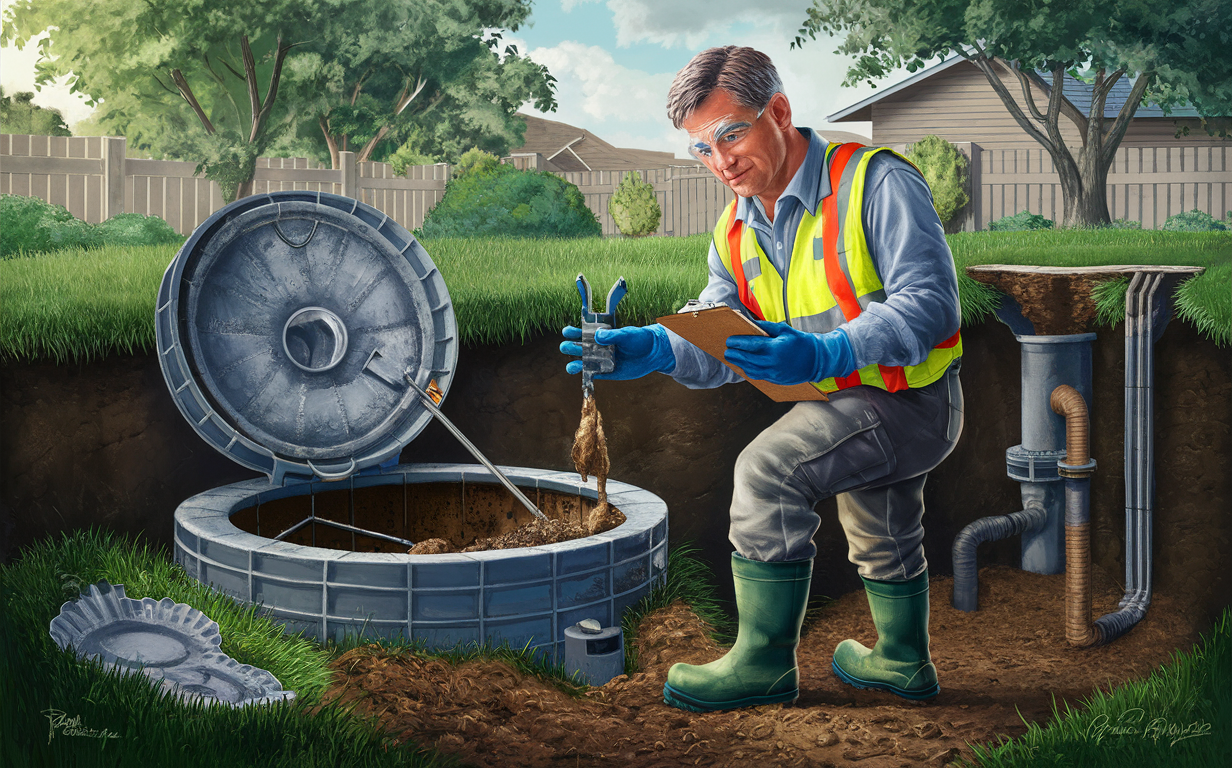
For most systems, an inspection every 3-5 years is recommended. However, if you notice any signs of problems—such as slow drains, foul odors, or standing water near the tank—schedule an inspection immediately.
Signs Immediate Inspection: Troubleshooting Septic System Problems with Inspections
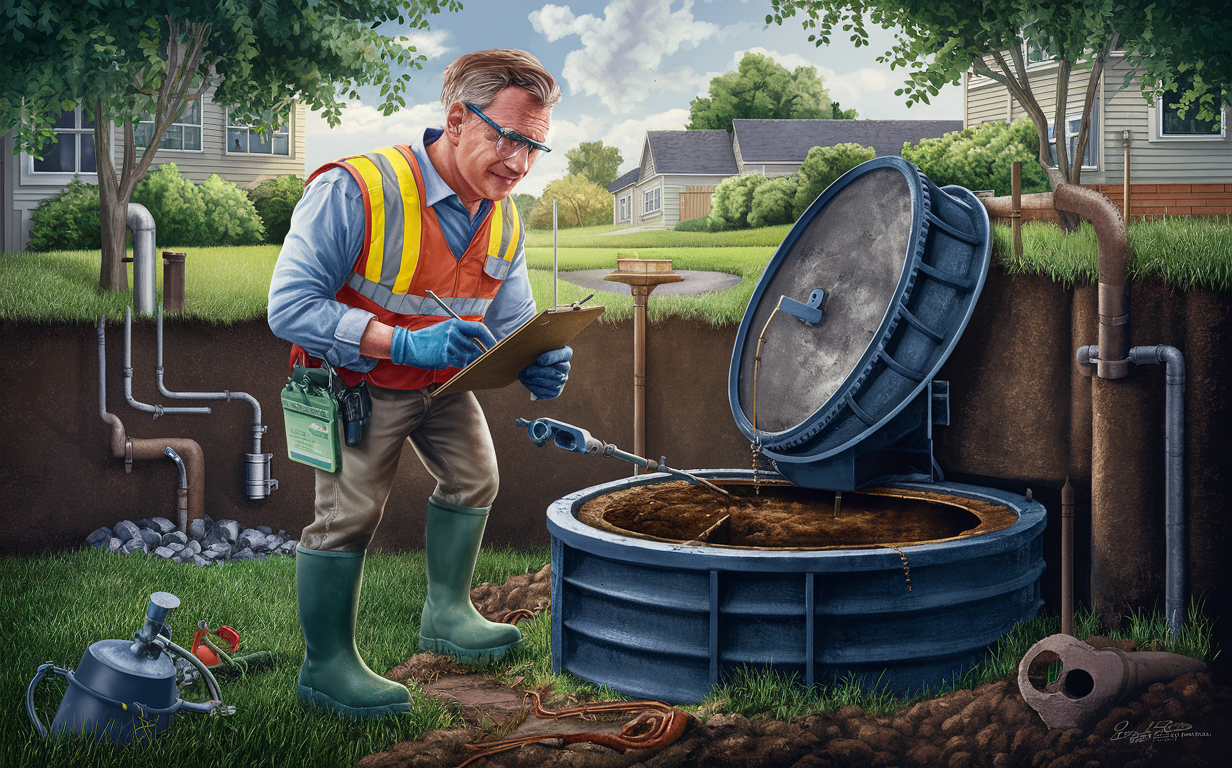
- Slow Drains: If your sinks, toilets, or showers are draining slowly, it could indicate a blockage.
- Foul Odors: Bad smells emanating from your drains or the area around your septic tank are a red flag.
- Standing Water: Pools of water around the septic tank or leach field suggest there may be a leak or overflow.
Comparison of Troubleshooting Septic System Problems with Inspections Techniques
| Inspection Technique | Description | Best For |
|---|---|---|
| Visual Inspection | Checking the surroundings of the septic system | Early identification of leaks |
| Sludge Measurement | Measuring sludge levels within the tank | Determining need for pumping |
| Video Camera Inspection | Using a camera to inspect inside pipes | Detecting blockages & cracks |
| Dye Tests | Flushing dye to locate leaks | Finding leaks |
Cost Of Troubleshooting Septic System Problems with Inspections
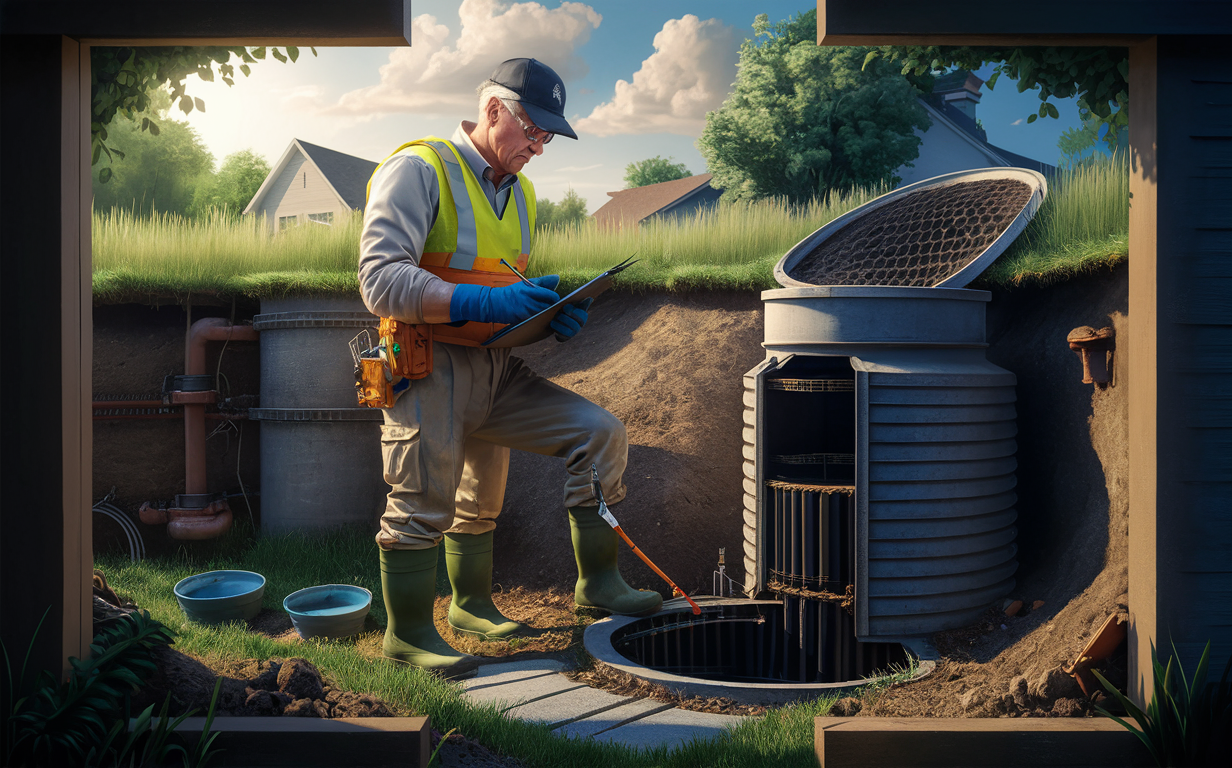
The cost of a septic system inspection can vary widely. Basic visual inspections may cost under $100, while comprehensive inspections using advanced tools can cost several hundred dollars.
Typical Inspection Costs
| Inspection Type | Cost Range |
|---|---|
| Basic Visual Inspection | $50 – $100 |
| Sludge Measurement | $100 – $150 |
| Video Camera Inspection | $250 – $500 |
| Comprehensive Inspection | $300 – $600 |
What to Do After Identifying Problems
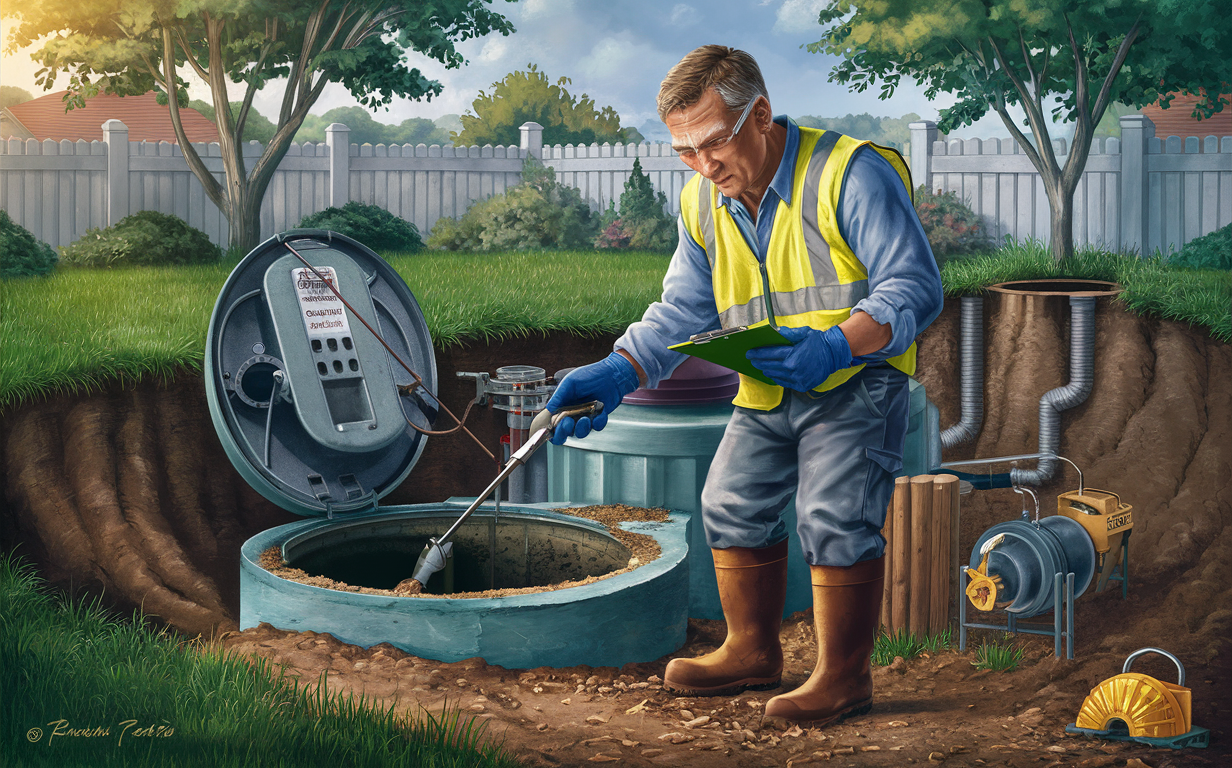
Identifying the problem is only the first step. Once you know what’s wrong, you need to take action:
- Schedule Repairs: Contact a professional for necessary repairs.
- Consider Upgrades: If your system is outdated, it might be time for an upgrade.
- Regular Maintenance: Stick to a regular maintenance schedule to avoid future problems.
Checklist for Regular Septic System Maintenance
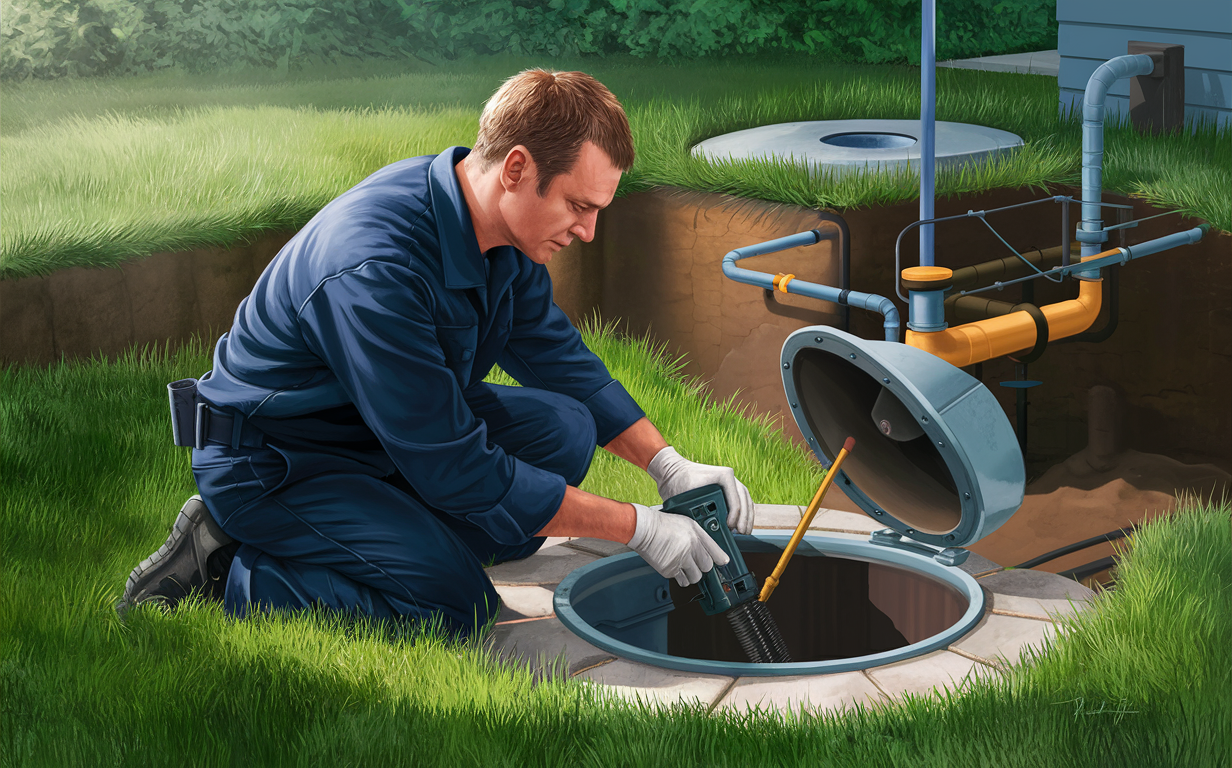
- Pumping the Tank: Every 3-5 years.
- Regular Inspections: At least every 3 years.
- Proper Waste Disposal: Avoid flushing non-degradable items.
- Water Conservation: Reduce the amount of water entering the system.
- Avoid Chemicals: Harsh chemicals can damage the bacteria that help break down waste.
Benefits of Troubleshooting Septic System Problems with Inspections
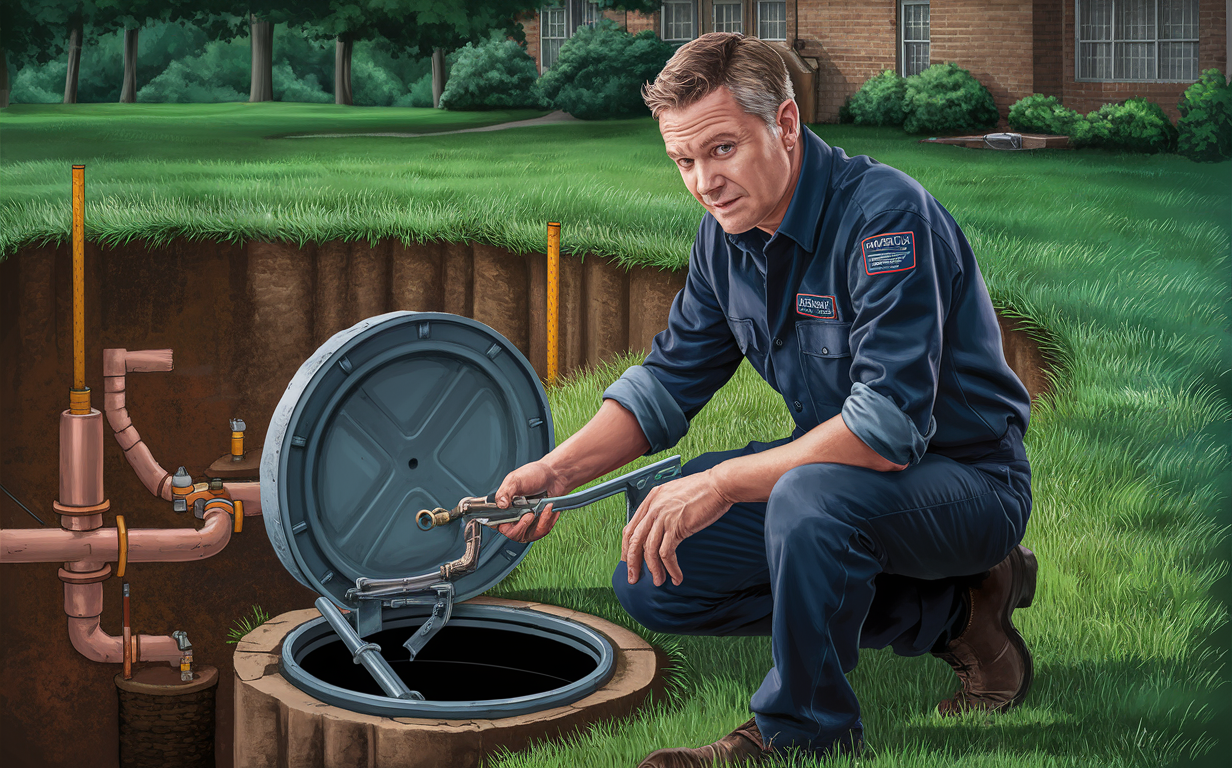
- Early Problem Detection: Catch issues before they become major repairs.
- Cost Savings: Prevent expensive repairs and replacements.
- Extended System Life: Keep your system running longer.
- Environmental Protection: Prevent groundwater contamination.
Key Takeaways from Real-Life Experiences
Many homeowners have shared their experiences dealing with septic system issues. Here are some key insights:
- Proactive Maintenance: Homeowners who stick to a regular maintenance schedule often face fewer problems.
- Professional Help: Hiring a professional can save time and headaches.
- Being Informed: Understanding how your system works can help you spot issues early.
Conclusion
Understanding the importance of regular septic system inspections can save you time, money, and stress. By identifying problems early and taking proactive steps, you can keep your septic system running smoothly for years. If you suspect any issues, don’t hesitate to call in the professionals for a comprehensive inspection.
By following these guidelines, you can ensure your septic system stays in top shape, protecting both your property and the environment. Feel free to visit our office or contact us for assistance.

